- The Four Paths of Yoga
- Karma Yoga – Path of Selfless Action
- Jnana Yoga – Path of Knowledge
- Bhakti Yoga – Path of Devotion
- Raja Yoga – Path of Discipline
- Combining the 4 Paths of Yoga
- The Ultimate Goal
- Conclusion
- FAQs
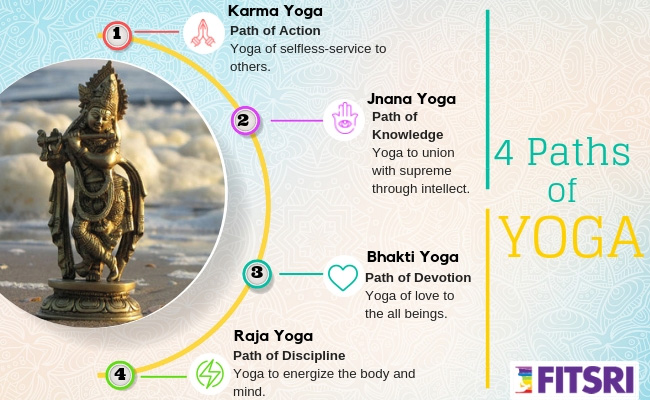
In the vast tapestry of yogic philosophy, the Bhagavad Gita, a revered text in Hinduism, serves as a guiding light. In this text, Lord Krishna talks about the secrets of spiritual growth through the lens of four paths of yoga.
In this article, we will understand these four paths of yoga, often referred to as “the four types of yoga in Hinduism.” Each of these paths, Karma Yoga, Jnana Yoga, Bhakti Yoga, and Raja Yoga, offers a unique approach to self-realization, catering to different personality types and spiritual inclinations. Together, they provide a comprehensive roadmap for individuals seeking to harmonize their inner and outer worlds.
What Are the Four Paths of Yoga?
The four paths of yoga, often referred to as “the four types of yoga in Hinduism,” are the foundational routes to spiritual growth and self-realization. The 4 paths of yoga are: Karma Yoga, Bhakti Yoga, Rāja Yoga and Jñāna Yoga. They are outlined in the Bhagavad Gita, a sacred Hindu scripture, and offer distinct approaches to achieving a harmonious union with the divine.
Purpose: The primary purpose of 4 paths of yoga is to guide individuals on their journey to self-realization and spiritual enlightenment. Each path caters to different personality types and temperaments, providing a personalized route to inner transformation.
Origins: The concept of the four paths of yoga originated from ancient Hindu philosophy and scriptures, with the Bhagavad Gita serving as a pivotal text that elucidates these paths. They represent the various ways individuals can navigate the complexities of life and the mind to attain spiritual awakening.
Essence in Yoga: These paths form the very essence of yoga philosophy. They offer a comprehensive framework for individuals to transcend the limitations of the material world and connect with their higher selves. Whether through selfless action, knowledge, devotion, or meditation, these paths provide the tools and guidance needed to navigate the intricate terrain of the human experience.
Karma Yoga – Path of Selfless Action
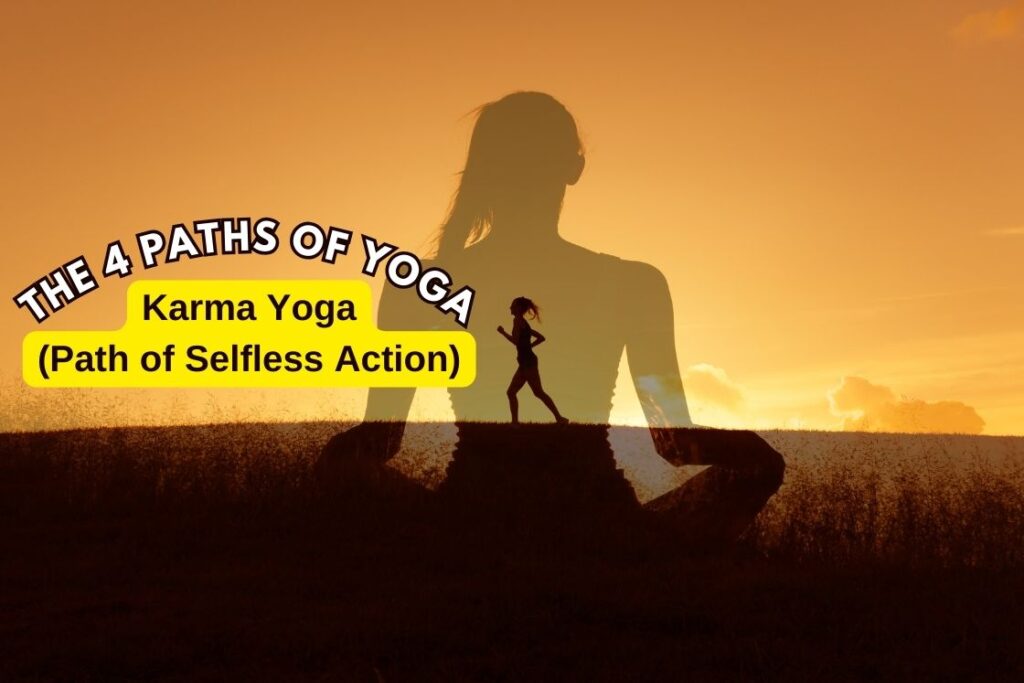
Karma Yoga, often referred to as the “Path of Selfless Action,” is one of the four principal paths of yoga. Rooted in the ancient teachings of the Bhagavad Gita, Karma Yoga embodies the practice of selflessly engaging in actions without attachment to outcomes.
This path recognizes that all actions in life are interconnected and that by performing one’s duties with dedication and altruism, one can attain spiritual growth and liberation.
Purpose and Essence
The essence of Karma Yoga lies in understanding the concept of karma, which signifies the law of cause and effect. Karma is the accumulated result of one’s actions, both good and bad, that influences future experiences. By embracing Karma Yoga, individuals seek to purify their minds and hearts by selflessly dedicating their actions to a higher purpose, often perceived as service to the Divine or humanity.
Karma Yoga is not confined to physical deeds alone; it encompasses mental actions and intentions as well. The ultimate purpose is to transcend the ego’s attachment to success or failure, gain or loss, and work with unwavering devotion and equanimity. This path fosters the dissolution of the ego and the cultivation of virtues like selflessness, humility, and compassion.
Origin and Influences
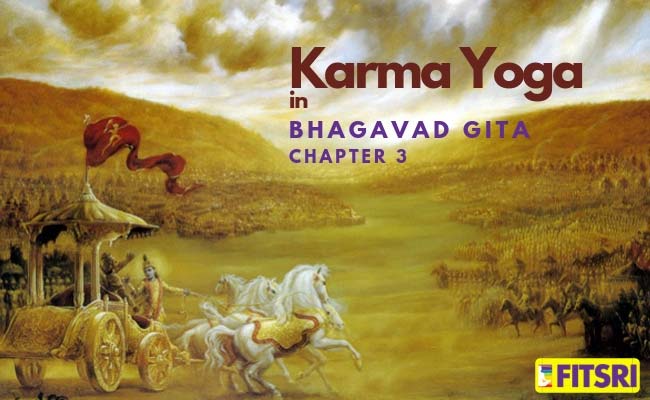
The concept of Karma Yoga finds its roots in the Bhagavad Gita that presents a profound dialogue between Lord Krishna and the warrior Arjuna. Lord Krishna, in his teachings to Arjuna, elucidates the importance of selfless action and its role in spiritual evolution.
Karma Yoga is deeply influenced by the principles of dharma (duty), which emphasize the righteous and moral path in life. It integrates seamlessly with the broader framework of yoga, where it complements other paths, such as Jnana (Knowledge), Bhakti (Devotion), and Raja (Meditation) Yoga.
Alignment with Yoga Philosophy
Karma Yoga aligns with the overarching philosophy of yoga by recognizing that the mind, when driven by selfish desires and attachment to outcomes, is a source of suffering. By engaging in selfless actions, individuals gradually free themselves from the shackles of the ego, reducing the mental impurities that obscure the realization of their True Self. This path empowers individuals to transcend the limitations of the material world and move closer to spiritual enlightenment.
Karma Yoga in Practice
The practice of Karma Yoga involves performing one’s duties and responsibilities without any expectation of personal gain or recognition. Individuals practice mindfulness in their actions, dedicating their work to a higher purpose or the welfare of others. Service to humanity, acts of kindness, and volunteerism are common manifestations of Karma Yoga in daily life.
By continually offering the results of their actions to a higher ideal or divine principle, practitioners of Karma Yoga cultivate a sense of detachment from the fruits of their labor. Over time, this leads to a profound transformation of the individual, fostering a deep sense of inner peace and self-realization.
Conclusion: Karma Yoga stands as a powerful path that teaches us that selfless actions are not only a means of serving others but also a transformative journey toward spiritual awakening. It is a path of purity, where individuals strive to purify their hearts and minds, transcending the ego’s limitations, and ultimately realizing their unity with the Divine.
Jnana Yoga – Path of Knowledge
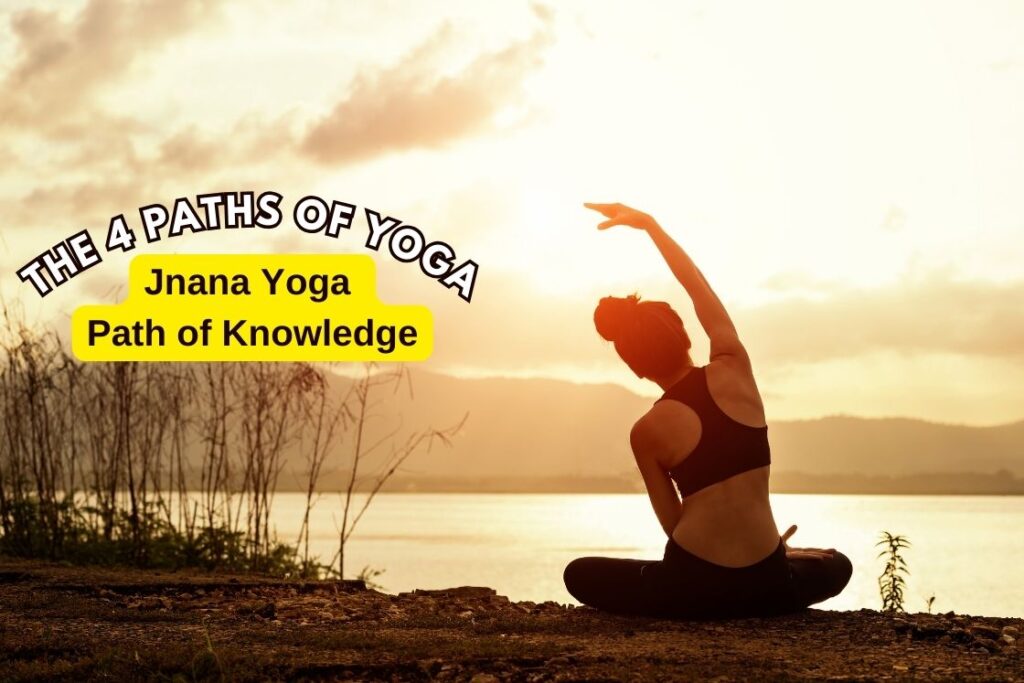
Jnana Yoga, often referred to as the “Path of Knowledge,” is one of the four primary paths of yoga. Rooted in profound philosophical inquiry, Jnana Yoga encourages seekers to explore the nature of reality, self, and the universe through the lens of wisdom and discernment. This path recognizes that true knowledge is the key to liberation and self-realization.
Purpose and Essence
The essence of Jnana Yoga lies in the pursuit of self-realization through the acquisition of spiritual knowledge and wisdom. Practitioners of this path seek to transcend the limitations of the ego-bound self and gain a deep understanding of their true nature. They recognize that the Self (Atman) is identical to the Universal Consciousness (Brahman) and that this realization leads to liberation (moksha).
Jnana Yogis strive to discern between the eternal and the transient, recognizing that the material world is impermanent while the Self is eternal and unchanging. The ultimate purpose is to eliminate the ignorance (avidya) that veils one’s true identity and attain a state of pure awareness.
Origin and Influences
The roots of Jnana Yoga can be traced back to ancient Indian philosophy, particularly the Vedanta school of thought. Vedanta asserts that reality is non-dual (advaita), and the pursuit of knowledge is the means to realize this oneness. Influenced by the Upanishads and other sacred texts, Jnana Yoga integrates these philosophical principles into its practice.
The teachings of Adi Shankaracharya, a prominent Indian philosopher, further enriched the philosophy of Jnana Yoga. His commentaries on the Upanishads and Advaita Vedanta are renowned for their depth and clarity.
Also read: Advaita Vedanta: The Philosophy of Non-Duality
Alignment with Yoga Philosophy
Jnana Yoga aligns with the broader philosophy of yoga by emphasizing self-inquiry and discernment. It recognizes that the mind, when clouded by ignorance and ego, perpetuates suffering. By delving into the nature of reality and the self, individuals can dismantle the illusions that bind them and attain a state of liberation.
This path acknowledges that direct experience and realization of one’s true nature are the ultimate goals of life. It complements other paths of yoga by providing a foundation of wisdom and understanding upon which spiritual practices are built.
Jnana Yoga in Practice
The practice of Jnana Yoga involves deep self-inquiry, contemplation, and meditation. Seekers engage in profound philosophical discussions and study sacred texts to gain insight into the nature of the Self and the universe. They question the very essence of reality, often beginning with the fundamental inquiry, “Who am I?”
Discrimination (viveka) is a key aspect of Jnana Yoga, allowing practitioners to differentiate between the real and the unreal, the eternal and the transient. They learn to disidentify from the ego and recognize their oneness with the Supreme Reality.
By cultivating wisdom and self-awareness, Jnana Yogis gradually dissolve the ego’s illusions, leading to the direct realization of their divine nature.
Conclusion: Jnana Yoga invites us on a profound journey of self-discovery and wisdom. It emphasizes the importance of transcending ignorance and realizing our true nature as eternal and unchanging.
Bhakti Yoga – Path of Devotion
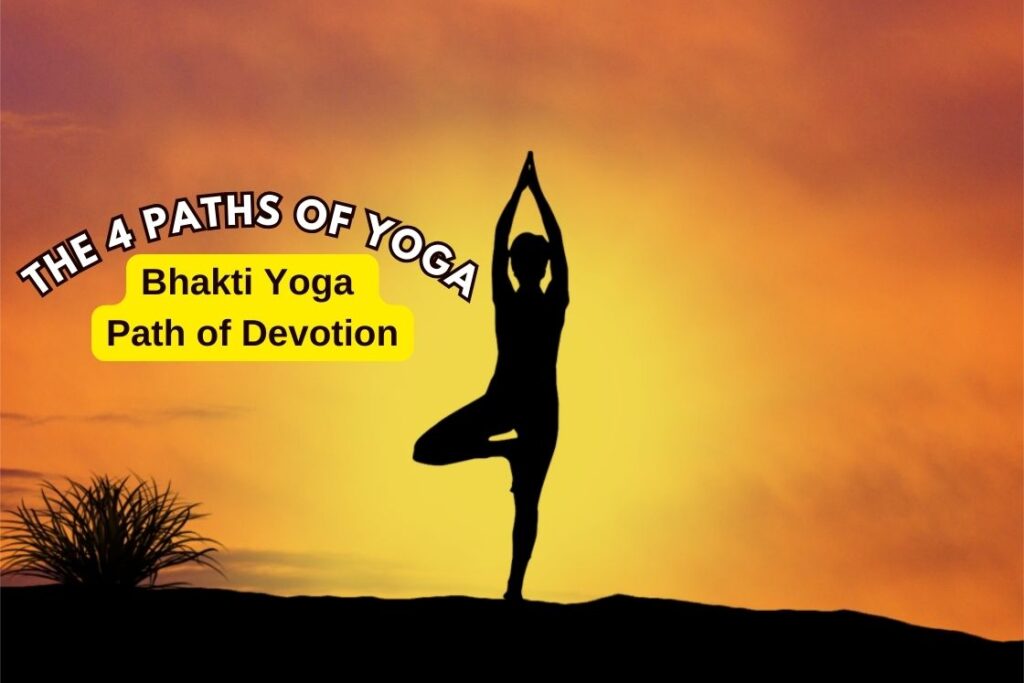
Bhakti Yoga, often referred to as the “Path of Devotion,” is one of the four primary paths of yoga. Rooted in unwavering love, devotion, and surrender, Bhakti Yoga is a heartfelt journey towards oneness with the Divine. It recognizes that the purest form of devotion can lead to the ultimate union with the Supreme.
Purpose and Essence
The essence of Bhakti Yoga lies in the cultivation of profound devotion and love for the Divine. Practitioners of this path seek to establish an intimate, loving relationship with the Divine, recognizing the presence of the Divine in all aspects of existence. The ultimate purpose is to transcend the ego and merge with the Divine in a state of pure love and surrender.
Bhakti Yogis understand that the path of devotion is accessible to all, regardless of age, background, or knowledge. It offers a direct and accessible means of connecting with the Divine and experiencing a sense of unity and harmony with all of creation.
Origin and Influences
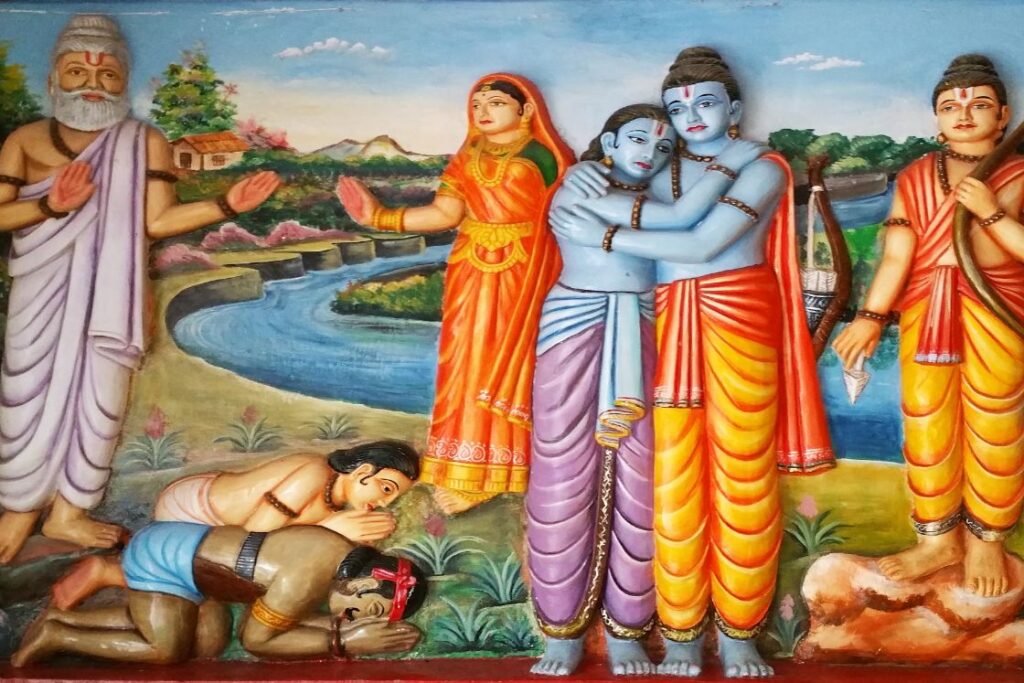
Bhakti Yoga finds its roots in Bhagavad Gita, the Ramayana, and the Bhagavata Purana. These hindu texts emphasize the significance of unwavering devotion to God as a means to attain spiritual realization.
Throughout history, numerous saints and sages have played a pivotal role in popularizing and practicing Bhakti Yoga. Their devotional songs, hymns, and teachings have inspired countless individuals to embark on the path of love and devotion.
Alignment with Yoga Philosophy
Bhakti Yoga aligns with the broader philosophy of yoga by emphasizing the power of love, devotion, and surrender as potent tools for self-realization. It recognizes that the ego can be transcended through the overwhelming force of love for the Divine.
This path acknowledges that the Divine can be worshiped and approached in various forms, be it a personal deity, a universal force, or the formless Absolute. Bhakti Yoga complements other paths of yoga by providing a heart-centered foundation upon which spiritual practices are built.
Bhakti Yoga in Practice
The practice of Bhakti Yoga involves acts of devotion, such as prayer, singing devotional songs (bhajans), and participating in rituals and ceremonies dedicated to the Divine. Seekers often choose a personal deity or form of the Divine that resonates with their hearts.
Central to Bhakti Yoga is the concept of surrender (prapatti), where practitioners relinquish their egoic desires and trust in the Divine’s will. This surrender is marked by unwavering faith and complete acceptance of life’s circumstances.
By immersing themselves in acts of love and devotion, Bhakti Yogis experience profound states of bliss and ecstasy. They believe that through selfless love for the Divine, they can achieve union with the Supreme.
Conclusion: Bhakti Yoga beckons us to embark on a heart-centered journey of devotion and surrender. It teaches us that love for the Divine is a transformative force that can lead to spiritual realization.
Raja Yoga – Path of Discipline
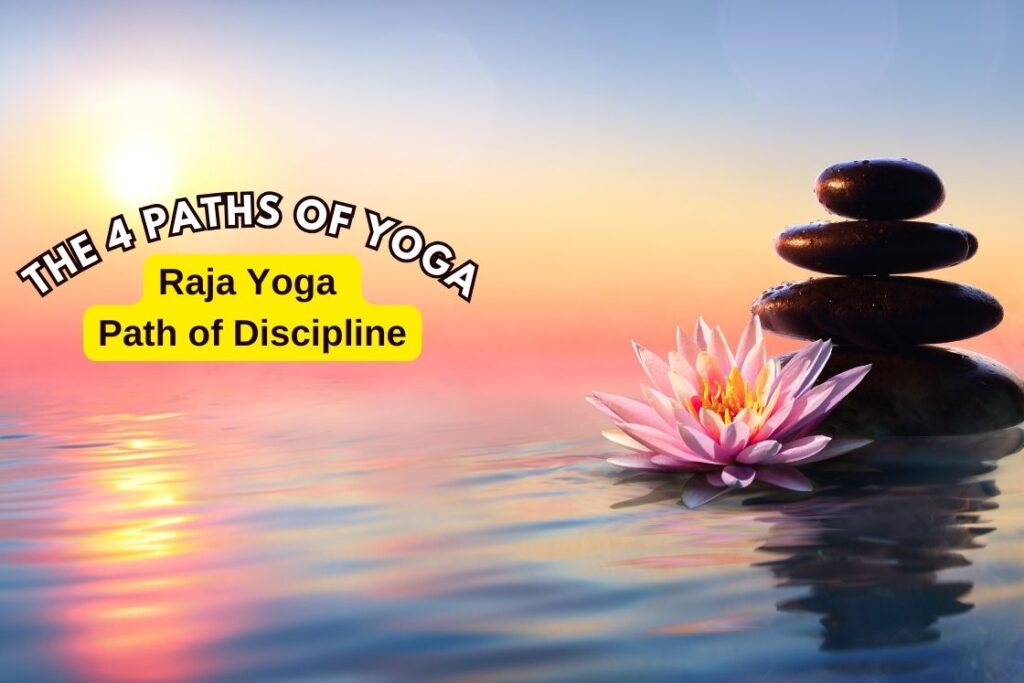
Raja Yoga, often referred to as the “Path of Discipline,” is a comprehensive system of yoga that focuses on the mastery of the mind and self-control. Rooted in Patanjali’s Yoga Sutras, this path provides a structured framework for individuals seeking to attain inner peace, mental clarity, and spiritual realization.
Purpose and Essence
The essence of Raja Yoga lies in the meticulous discipline and control of one’s mind and senses. It is a path that leads to self-mastery, allowing practitioners to harness the power of their own minds to achieve spiritual awakening. The ultimate purpose is to transcend the fluctuations of the mind and attain a state of profound inner stillness and realization of the Self.
Raja Yoga teaches that the mind is both the source of suffering and the key to liberation. Through disciplined practices, seekers aim to quiet the mind’s incessant chatter, overcome distractions, and experience the pure awareness that lies beneath the mental turbulence.
Also read: Is Raja Yoga same as Ashtanga yoga?
Origin and Influences
Raja Yoga is rooted in the ancient teachings of Patanjali, a sage who compiled the Yoga Sutras, a foundational text that provides a systematic guide to the practice of yoga. Patanjali’s teachings have greatly influenced the development of various yoga styles and meditation techniques.
The path of Raja Yoga has been refined and expanded upon by numerous spiritual leaders and yogic philosophers, making it one of the most widely practiced forms of yoga in the modern world.
Alignment with Yoga Philosophy
Raja Yoga aligns closely with the broader philosophy of yoga by emphasizing the importance of mental and emotional mastery. It acknowledges that the mind’s fluctuations (vrittis) are a significant obstacle to self-realization and inner peace.
This path recognizes that the mind can be a valuable tool when properly harnessed and controlled. It teaches that by practicing specific techniques, such as meditation, concentration, and breath control, individuals can achieve a state of profound inner balance and clarity.
Raja Yoga in Practice
Central to Raja Yoga is the practice of meditation (dhyana). Seekers dedicate themselves to regular meditation sessions, which involve focused attention on a chosen object, such as the breath, a mantra, or a visual symbol. Meditation enables individuals to observe their thoughts without attachment, gradually calming the mind’s fluctuations.
Another essential component of Raja Yoga is the practice of asana (physical postures) and pranayama (breath control). These practices help prepare the body and mind for meditation by enhancing physical flexibility, strengthening the nervous system, and regulating the breath.
The path of Raja Yoga also includes ethical guidelines (yamas and niyamas) that promote virtuous living, self-discipline, and moral conduct.
Conclusion: Raja Yoga beckons us to embark on a disciplined journey of self-mastery and mental control. It teaches us that through meditation, asana, and breath control, we can quiet the mind’s turbulence and attain a state of profound inner stillness.
Combining the 4 Paths – Yoga of Synthesis
The journey of self-discovery and spiritual awakening through yoga does not require exclusive commitment to a single path. In fact, many practitioners find that combining elements from multiple paths, known as the “Yoga of Synthesis,” can lead to a more holistic and profound yoga experience.
The Yoga of Synthesis, often attributed to Swami Sivananda, emphasizes the idea that different individuals have unique strengths and inclinations. While one may resonate deeply with the path of Bhakti Yoga, another may find their spiritual calling in Raja Yoga or Karma Yoga.
The Yoga of Synthesis encourages practitioners to recognize that these paths are not mutually exclusive but complementary.
The essence of this approach lies in the understanding that each path serves a specific purpose in the journey toward self-realization. Karma Yoga cultivates selflessness and action, Jnana Yoga nurtures wisdom and self-inquiry, Bhakti Yoga fosters devotion and love, and Raja Yoga hones mental discipline and meditation. By embracing aspects of each path, individuals can create a more balanced and integrated practice tailored to their unique needs and aspirations.
The Yoga of Synthesis allows practitioners to adapt their practice to changing circumstances and life stages. For instance, a person might predominantly follow Karma Yoga during active phases of life, where selfless service and action are essential. In times of introspection and self-inquiry, Jnana Yoga may take precedence.
The Ultimate Goal of the Four Paths of Yoga
The practice of yoga, through its various paths, serves a profound purpose—to lead individuals toward a state of union, self-realization, and spiritual awakening. While the 4 paths of yoga may appear distinct, they all share a common goal: the realization of the true self and the ultimate union with the divine.
Union with the Divine: At its core, the ultimate goal of all four paths of yoga is to facilitate a deep and transformative union between the individual soul (Atman) and the universal consciousness (Brahman). This union is often referred to as self-realization, enlightenment, or Samadhi, and it represents the culmination of the yogic journey.
- In Karma Yoga, individuals dissolve their ego-driven identities by performing selfless actions, ultimately recognizing their oneness with all of creation.
- Jnana Yoga leads practitioners on an inward journey of self-inquiry, culminating in the realization that they are not merely the body, mind, or emotions but the eternal consciousness itself.
- Bhakti Yoga fosters a profound love and devotion to the divine, ultimately merging the individual soul with the supreme source of love and compassion.
- Raja Yoga, through meditation and mental discipline, leads to the mastery of the mind and a direct experience of the transcendent.
Ananda: The Blissful State: The ultimate goal of the four paths of yoga is often described as the attainment of “Ananda,” which translates to bliss, joy, or supreme happiness. This blissful state is not contingent upon external circumstances but is an inherent quality of the self-realized soul. It is a state of profound contentment, peace, and interconnectedness with all of existence.
Ananda arises from the recognition that the limitations and fluctuations of the individual ego are illusions, and the true self is beyond these fleeting identities. It is the realization that the individual soul is an eternal spark of the divine, and this recognition brings an unshakable sense of joy and fulfillment.
Conclusion
In conclusion, the Four Paths of Yoga—Karma Yoga, Jnana Yoga, Bhakti Yoga, and Raja Yoga—offer diverse approaches to self-realization and spiritual growth. While each path has its unique principles and practices, they all ultimately lead to the realization of our true nature and union with the divine.
These paths provide valuable guidance for individuals seeking inner peace, purpose, and a deeper understanding of life. Whether you choose one path or integrate elements from all, the journey of self-discovery through yoga is a profound and transformative experience. Embrace the path that resonates with you, and may it lead you to a life filled with joy, love, and spiritual fulfillment.
FAQs on the 4 Paths of Yoga
The Four Paths of Yoga are Karma Yoga (Path of Selfless Action), Jnana Yoga (Path of Knowledge), Bhakti Yoga (Path of Devotion), and Raja Yoga (Path of Discipline). Each path offers a distinct approach to spiritual growth and self-realization.
Yes, you can combine elements of different yoga paths to create a practice that aligns with your spiritual journey. Many practitioners find that aspects of multiple paths resonate with them and choose to integrate these teachings into their lives.
There is no one-size-fits-all answer, as the best path for you depends on your personality and inclinations. However, Bhakti Yoga, the path of devotion, is often considered accessible for beginners due to its emphasis on love and devotion to a higher power.
The ultimate goal of all Four Paths of Yoga is self-realization and union with the divine or universal consciousness. It is the realization that the individual soul (Atman) is one with the supreme soul (Brahman) and experiencing a state of boundless joy and contentment.
Absolutely. Your spiritual journey is personal, and you may find that your needs and inclinations change over time. Many practitioners start with one path and later incorporate elements from others to deepen their practice.
While having a guru or teacher can be beneficial, it’s not mandatory. Many practitioners begin their journey through self-study and later seek guidance from experienced teachers. Ultimately, your sincerity and dedication to your practice are essential.
Self-reflection and experimentation are key. Explore each path by reading about them, attending classes, and trying out practices associated with each path. Listen to your heart and follow the path that resonates most deeply with you.
While these paths have deep spiritual roots, their principles can be applied in daily life by anyone seeking personal growth, inner peace, and a sense of purpose. They offer valuable guidance for navigating life’s challenges and finding meaning.
Yes, you can integrate the teachings and practices of the Four Paths of Yoga into your daily life without rigidly following a single path. Many practitioners find a harmonious blend of these paths enriches their lives.
There is no fixed order, and it depends on your individual journey. Some may start with Karma Yoga, while others may be drawn to Bhakti or Jnana Yoga first. Trust your intuition and follow the path that feels right for you at any given moment.
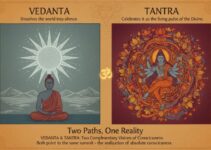
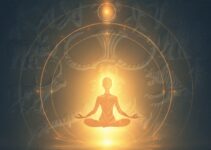


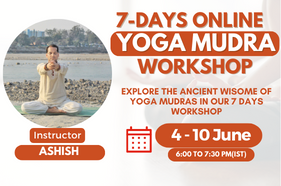
Wonderful, Will Use your reference in My Upcoming Book
very good learning for me …….
HI @Ashish, the article was precious. Could you also
share within these comments the books you mentioned on the “self” ?
Thank you in advance
Hello Luca, If you’re interested in exploring the concept of the “self” or “Atman” in Hinduism, here the few books you can use (that I recommended to victoria):
1. Kathopanisadic Concept of Atman and Its Realisation by Mishra Nandini
2. Brihadaranyaka Upanishad by Sankaracarya
Other than this, Advaita Vedanta philosophy & commentary on Bhagavad Gita by Shankaracharya are great sources to understand Self.
Okay, Now I got it! The main cause of different Individuality is the Chitta.
Btw, Thanks for referring these fantastic books ideas Ashish.
Hello Ashish,
I have read different theories which defines 4 paths of yoga but here how you explained it through concept of individuality is quite understandable for me.
Can you clear my one doubt, how ‘self’ affects the individuality of a person which eventually leads person to the different paths of yoga?
Hi Victoria,
Firstly, thanks for your appreciation. I can imagine by your doubt that you quite understand, what I want to convey to my readers through this post. Here I can describe your doubt in this way:
The ‘self’ is a conscious entity lies in a living creature. Though it’s conscious, it doesn’t affect the perception of a person. So you can’t say it’s ‘self’ which affects the individuality of a person. It’s the internal organs system (Chitta) which leads person to different paths of yoga.
I have mailed you some books reference on the “concept of self.” I hope it will enhance your understanding.